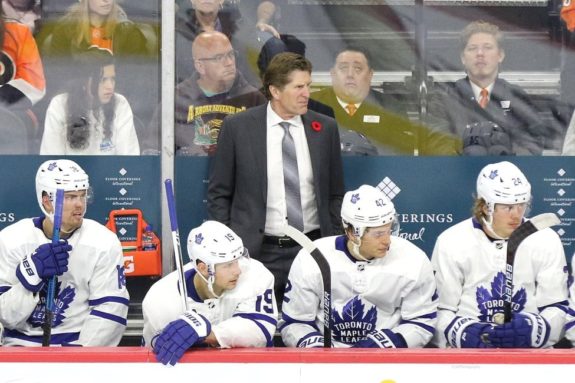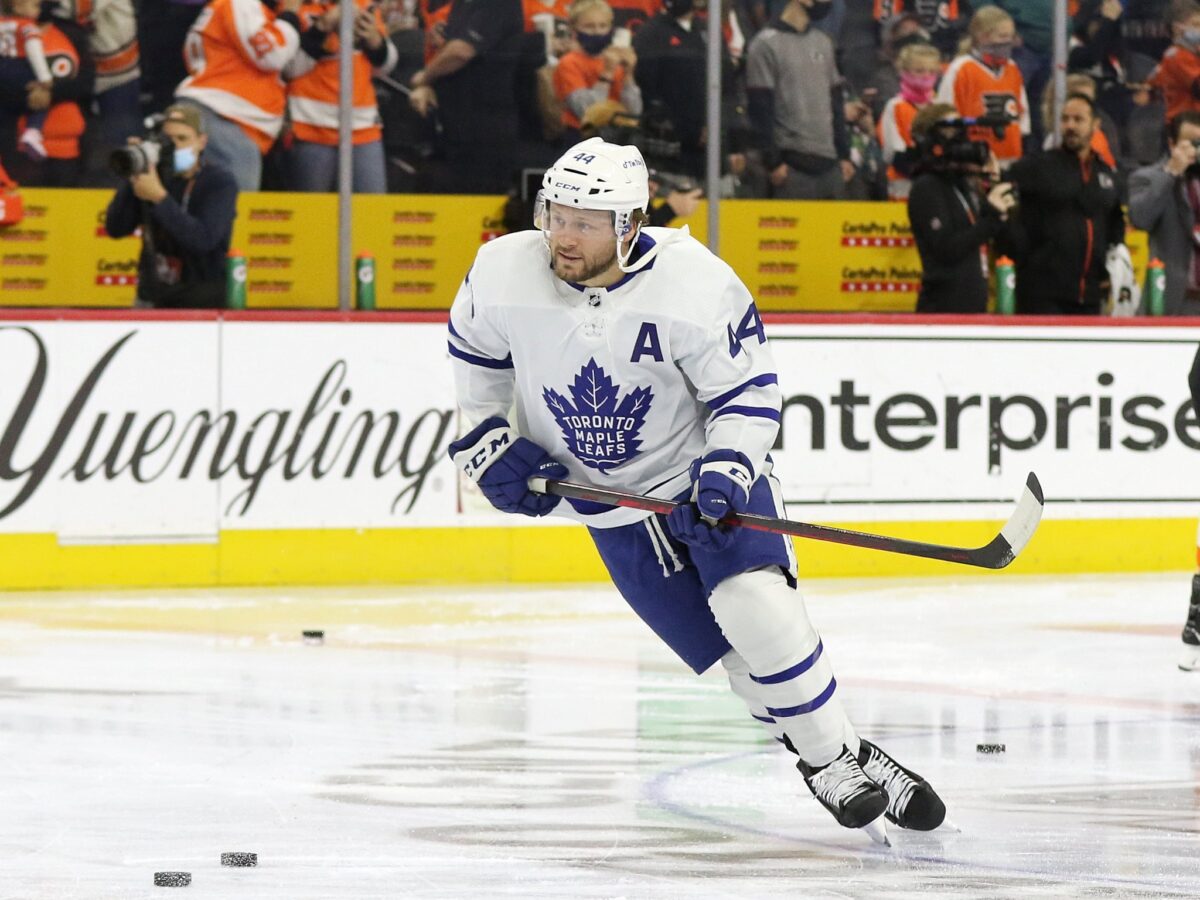The Toronto Maple Leafs are one of the best teams in the league this season. They have four of the best players in the game, and have been a top pick to win the Stanley Cup for several years. The issue, however, is the Leafs can’t seem to get out of the first round of the playoffs, and season after season their Cup run ends abruptly. One of the big reasons for the team falling short in the postseason has been its secondary scoring or depth behind its core four; once opponents shut the big four players down, the team struggled and ultimately lost. The team’s depth has vastly improved this season, and could be a key to Toronto’s staying power after the first round.
Leafs’ Playoff Woes Continue
The Leafs missed the playoffs for three straight seasons, starting in 2013-14 until 2015-16, during which time they drafted William Nylander (2014), Mitch Marner (2015), and Auston Matthews (2016). They hired Mike Babcock as coach in the 2015-16 season. He had previously won a Stanley Cup with the Detroit Red Wings in 2007-08 and was regarded as one of the best coaches at the time. They also drafted Morgan Rielly in 2012, and acquired goaltender Frederik Andersen (2016). By the 2016-17 season, the Leafs were beginning to be a powerful team and finished with 95 points, third in the division.

The Leafs looked like they would be contenders for the Cup and been hard to beat in both the regular season and the playoffs. For three seasons – 2016-17 to 2017-18 – even though they finished as one of the top teams in the league, they couldn’t get past the first round of the playoffs. The Leafs then decided to up the ante and signed star free agent (FA) John Tavares in 2018, which put them from being an annual playoff team to odds on favourite to win the Stanley Cup. Even after getting Tavares and having all the star power they needed, they still couldn’t advance past the first round. After three first-round knockouts in the playoffs then a mediocre start, Babcock was fired 23 games into the 2019-20 season and replaced by current coach Sheldon Keefe.
Related: Mitch Marner Has Proved to Be Most Valuable of Maple Leafs’ Core Four
Keefe led the team to a third-place finish before the league shut down for COVID. Upon the league’s return with a 24-team postseason, the Leafs played a five-game qualifying round to determine if they would play in the 16 team playoffs, but lost to the Columbus Blue Jackets. The following season 2020-21, the league played a shortened 56-game season with teams only playing in their divisions. The Leafs played in an all Canadien division and dominated, finishing first. They met the Montreal Canadiens in the first round, but the heavily favoured Leafs lost in seven games and did not make it to the second round.
Leafs Seek Answers
Leafs management, media and fans have all been looking for answers to why they can’t move further in the playoffs. One particular player who was either blamed or questioned a lot was Andersen. He played 25 games in the playoffs for the Leafs and compiled a .916 save percentage (SV%) and 3.9 goals saved above average (GSAA). Except for the 2017-18 playoffs, Andersen played well for the Leafs with an above-average SV% but a below-average goals-against average (GAA) of 2.78. Should Andersen hold the brunt of the blame, or has it been the Leafs’ defence? With a reasonably good SV%, you could blame the defence, and the Leafs struggled to find quality defencemen for years due to the strength and money given to the forward group.

The Leafs only had two top defencemen when they rose to the top in Jake Gardiner and Rielly. The rest were mostly bottom pairing defencemen, and Gardiner and Rielly were not the best defensemen in the defensive zone. It could easily be said that the lack of top-tier defencemen were a good reason for the team’s inability to advance in the postseason. In 2018-19 they added Jake Muzzin, the following year, they added Tyson Barrie and Cody Ceci and improved their top-four defence, but had the same results. This is because while defence was a big issue, another reason for their inability to advance was scoring from the big four.

Matthews has 24 points in 32 playoff games, and has been close to a point per game (PPG) player for all but 2017-18 season, so he’s doing his part. Tavares has eight points in 13 playoff games with the Leafs, but only played one game last season due to suffering an injury in the first game of the playoffs. Marner, who hasn’t scored a goal in his last 12 playoff games, has 24 points in 32 games, which isn’t a lousy scoring rate; however, most of his points came in his first two playoff seasons where he had 12 points in 13 games. Finally, Nylander has 23 points in 32 games, but unlike Marner, he has most of his points in the last two playoff seasons with 12.
You may also like:
- Maple Leafs Should Keep Murray as Third Goaltender
- Flames & Maple Leafs Trade History Revisited
- 3 Players the Maple Leafs Could Target on a PTO
- NHL Rumors: Oilers, Maple Leafs, Capitals, Kuznetsov News
- Maple Leafs Should Target Evgeny Kuznetsov as Reclamation Project
The big four are not having issues scoring. They are having problems being consistent with their scoring. This is primarily due to the opposing teams shutting them down and preventing them from scoring, allowing for the secondary scoring to be successful. The secondary scoring has been the Leafs’ issue in the playoffs. Their depth has been their anchor and has been holding them back from getting past the first round.
Leafs Finally Solve Playoff Woes
Over the last three seasons, the Leafs have been slowly improving their depth. They acquired players like Alexander Kerfoot, Pierre Engvall, and Jason Spezza, and last season many thought they could make a long playoff run after adding Wayne Simmonds and Joe Thornton. Low and behold, however, it was not to be. After spending the last few seasons picking up well-known depth players and seasoned vets and getting the same result, the Leafs decided to go off the books and sign some minor depth players, and so far this season, it likes like they could be the answer.

This offseason, the Leafs went out and signed Michael Bunting, David Kampf, Ondrej Kase, and Nick Ritchie. Besides Ritchie, the average fan probably didn’t give two thoughts on these players or thought one or two might make the team as 13th forward. Instead, all four have been able to play up and down the lineup and compliment the Leafs’ special teams. Bunting and Kase are top ten in scoring for the team, Bunting sixth in points and Kase fourth in goals. Ritchie was the big offseason signing, and he is struggling the most. Bunting, Kempf and Kase are averaging over 14 minutes of ice time and providing the secondary scoring the Leafs needed.
The fact they can play on anywhere in the top nine also allows Keefe to spread his big four over the three lines and provide each one with an elite player. This is the type of depth the Leafs need to succeed in the playoffs, players who can pick up the scoring when the opposition smothers the big four. Will this carry over into the playoffs? That question will only be answered went the time comes, but from the looks of things so far, there is no reason to think why it wouldn’t, and Leafs fans will finally have something to cheer for after the first round of the Stanley Cup playoffs.
